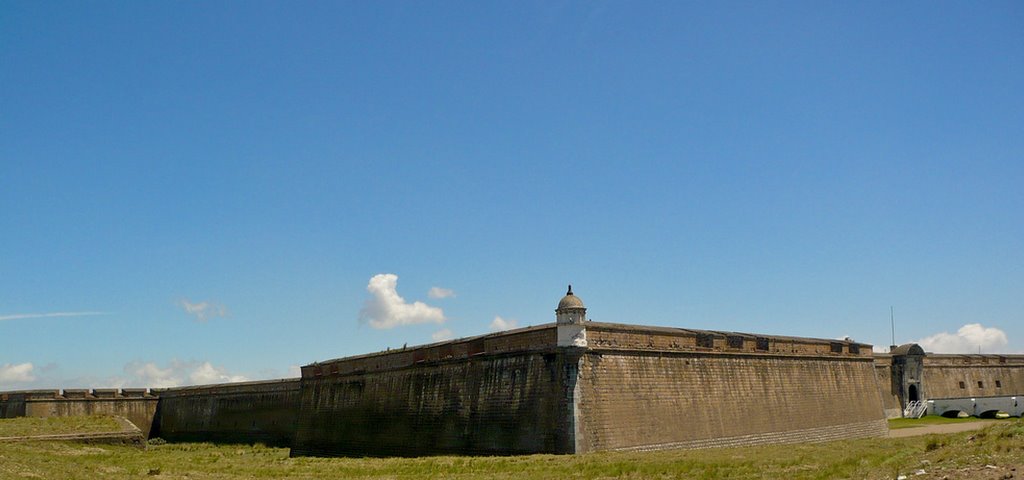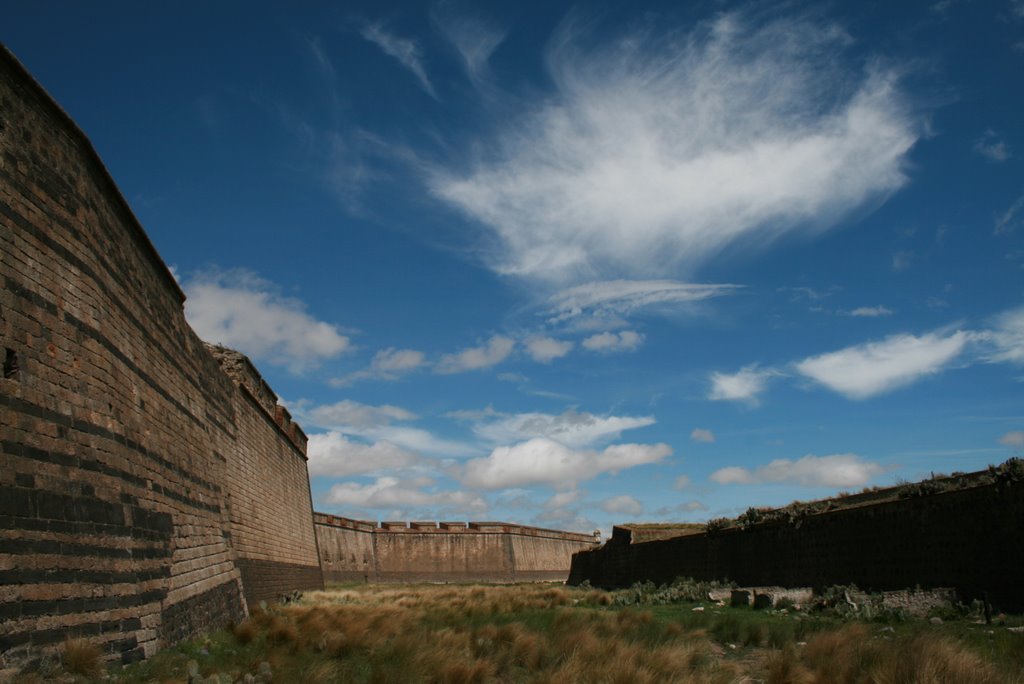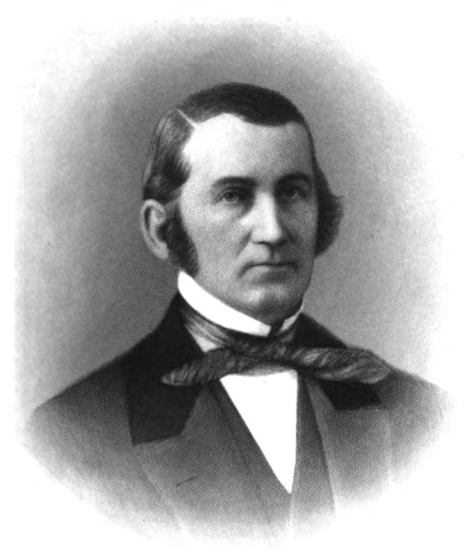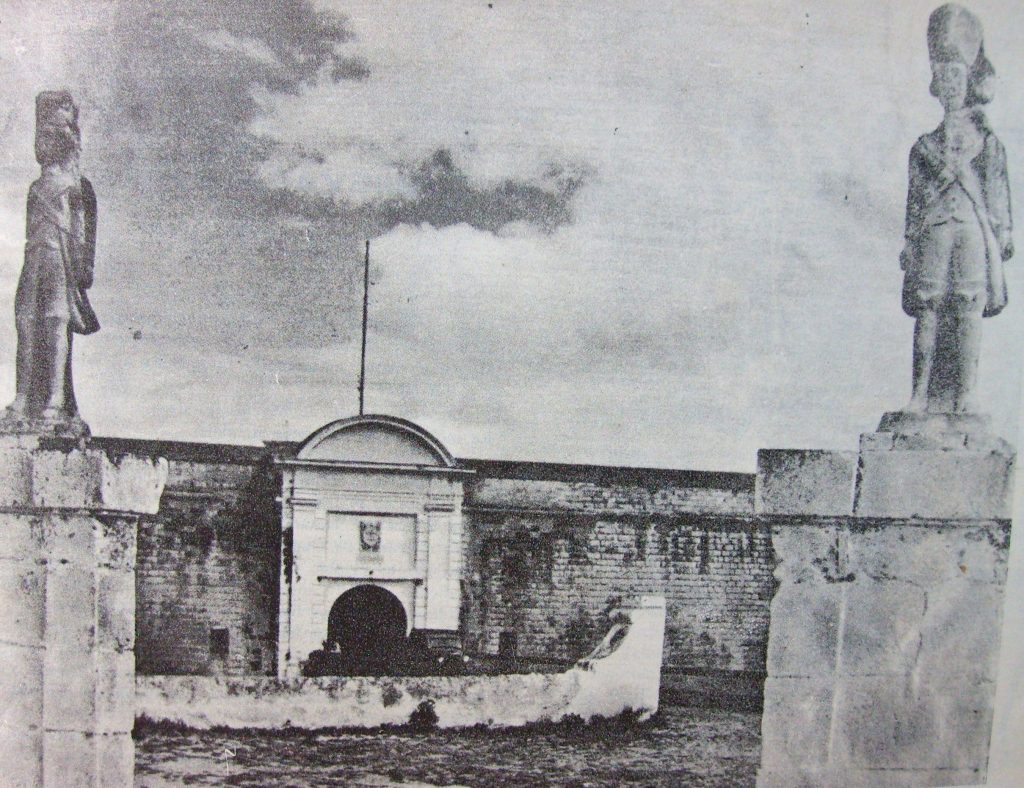
Fortress of San Carlos in Perote, Veracruz, Mexico (Photo by José Francisco del Valle Mojica, CC BY 2.0)
The eighteenth-century prison, formerly known as the Castle of San Carlos, had an older history under New Spain’s Viceroy as a “second-line of defense, if needed, for the port of Vera Cruz.” The fortress was completed after several years of construction beginning in 1770 and later housed prisoners during the Mexican Revolution (1810-1821).

A mid-twentieth-century summary of the notorious “hellhole” describes the windy, high-altitude prison built atop an extinct volcano. “Every force, either of nature’s or man’s making, combines to make Perote Prison one of the worst spots imaginable. Even the Aztecs called the place ‘pinahuizapan,’ or ‘something-to-be-buried-in.’” For captured soldiers who fought for the Republic of Texas, Perote was the end of the world.[1]
“Deep vows of Vengeance”
The imprisonment of Texans in the 1840s was a cause of considerable anger among those who returned to Mexico during the war with the United States. George Wilkens Kendall, a founder and reporter for the New Orleans Times-Picayune, addressed these motivations in his 1844 Narrative of the Texan Santa Fé Expedition. The failed 1841 expedition sent to New Mexico to trade with the Republic of Texas and seize the Santa Fe Trail, ended in disaster, and its members (including Kendall) were taken prisoner and marched more than a thousand miles to Mexico City. Many of the prisoners who survived the march were held in Perote. According to Kendall, the “butchery” of prisoners at the hands of the Mexicans made the entire group “callous” and eager for retribution:
“Inly we prayed that a time might come when their death could be avenged – that the damnable crimes hourly enacted around us might be atoned for. There was the breast of many a hero in that sorry band; and in its pent-up chamber were recorded deep vows of vengeance yet to be executed…”[2]
Since Kendall was an American citizen, he was fortunate the U.S. State Department worked to get him released. However, for most Texan prisoners whose young republic was at war, waiting for help to arrive was futile.
Escape
One prisoner intent on escaping Perote was Thomas Jefferson Green. Green was one of a couple hundred Texans who became prisoners after a failed effort in late 1842 to assault the Rio Grande town of Ciudad Mier.

Like the failed 1841 Santa Fé Expedition, the Mier Expedition’s infamy was etched in Lone Star lore after seventeen Texans were executed following an escape attempt in early 1843. The execution lottery – otherwise known as the Black Bean Episode – was the opening act of a longer ordeal for Green, who luckily avoided picking a fatal “bloody” black bean only to be marched like Kendall to Perote. Although one escape attempt in July of 1843 was thwarted, sixteen Mier prisoners managed to tunnel out and make their escape on March 25, 1844 – exactly one year after the executions. In 1845, a year before the Mexican-American War began, Green published the ordeal noting how their previous escape attempt made their second attempt more difficult:
They would a dozen times per day enter the cells of our men, and examine the walls with the most minute care, not thinking it possible that there could be any other mode of escape. In this they were much mistaken. During that terrible malady of hard work and starvation which swept off so many of our men, the governor granted the survivors permission to cover their pavement floor with heavy boards, being softer to sleep upon than stones. They then conceived the plan of sinking a perpendicular shaft through the pavement of their floor some forty feet deep, and tunnelling underneath the main wall so as to reach the bottom of the great moat upon the outside. Tremendous an undertaking as this was, these bold men completed it in forty nights, for they could not work upon it in the daytime.[3]
Flight to Freedom
With the help of an elder Mexican guide familiar with the smuggling trade, Green and a number of other companions slowly made their way to the coastal city of Veracruz. En route they passed Santa Anna’s large estate near the Antigua River, and upon arriving in the port city lodged “in the midst of the infected district, where scores died daily of the vomito, the worst kind of yellow fever, and where we were constantly under apprehension of discovery.” The small group stayed in hiding for nearly two weeks, and through a small opening from a window saw “several officers of the Mexican army that we well knew… Here in this death’s hole we had to lay and sweat out the last days of hot July.” Green recalled a few American sailors offering “their services” to the group, and it was soon “ascertained that the steamer ‘Petrita,’ formerly the ‘Champion’ of Mobile, would be the first vessel sailing for the United States…”

It was aboard this vessel that several former Perote prisoners were secretly stowed. After eight days of decent weather at sea, the ship landed at New Orleans at night:
With feelings which do not often occur in one’s life, we once more leaped upon freedom’s soil; and as we required neither clearance or porters, we wended our way up town, and called into the first open “drinkery.” Here the scene changed. These very men, I among the rest, who, a few short weeks before, would have given a pint of their blood for a gill of the most miserable brandy ever distilled, now want, one a “sherry cobbler” one a “Tom and Jerry” and… all concluded that a little rose water round the edge of the cut glass would make it go the better. How comparative is human happiness!
Two days later the former prisoners “were again upon the ‘deep blue sea’… sailing for the ‘Lone Star.’”[4]
Of the sixteen men who escaped Perote with Green in 1844, nine made it to freedom and seven were recaptured. vincit qui patitur
[1] J.J. McGrath and Walace Hawkins, “Perote Fort: Where Texans Were Imprisoned.” The Southwestern Historical Quarterly 48, no. 3 (Jan. 1945): 344-345.
[2] George Wilkins Kendall, Narrative of the Texan Santa Fé Expedition, vol. 2 (New York: Harper and Brothers, 1844), 17. See also: See: Ralph A. Wooster, “Texas Military Operations against Mexico, 1842-1843.” The Southwestern Historical Quarterly 67, no. 4 (April 1964): 465-484.
[3] Thomas J. Green, Journal of the Texian expedition against Mier; subsequent imprisonment of the author; his sufferings, and the final escape from castle of Perote (New York: Harpers, 1845), 373-4.
[4] Ibid. 347, 357, 364, 368-369.
About the author
Benjamin J. Swenson is an assistant professor at Hoseo University in Asan, South Korea. He holds a PhD from Pompeu Fabra University in Barcelona, Spain, where his dissertation addressed Euro-American military history and the advent of guerrilla warfare and counterinsurgency doctrine in the nineteenth century. His work has recently appeared in the Journal of Military History, and his latest, The Dawn of Guerrilla Warfare, will be published by UK’s Pen & Sword in 2023. His hobbies include Viking sagas and chess.